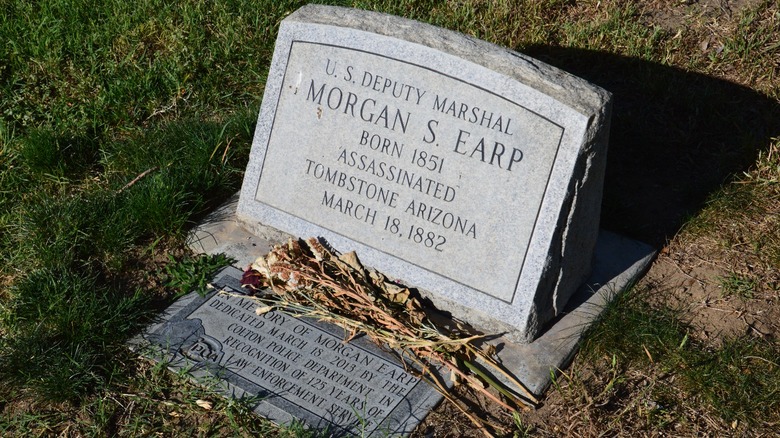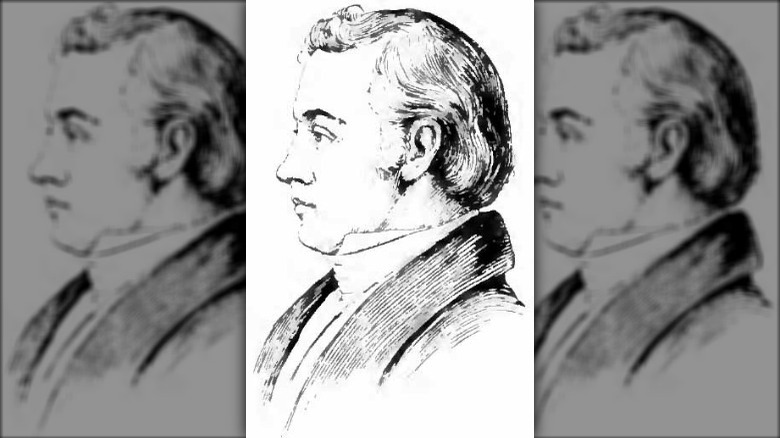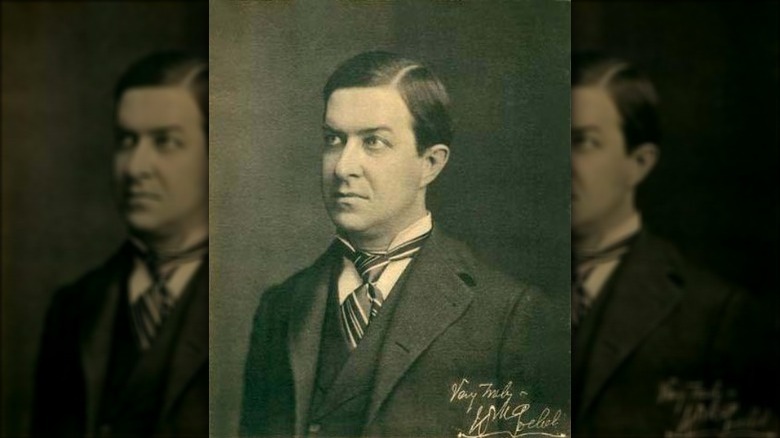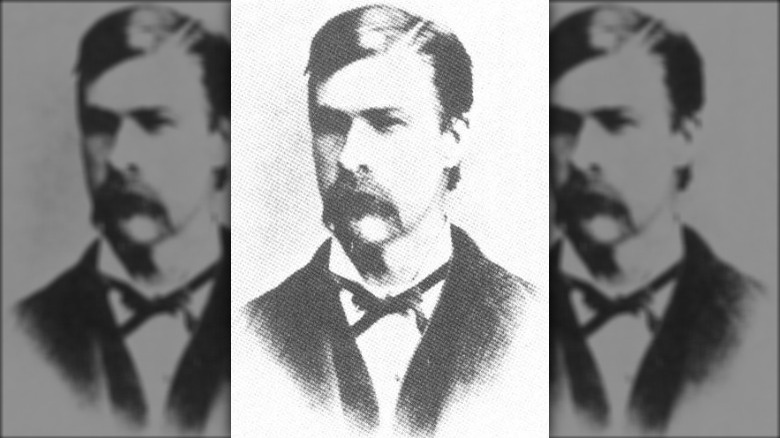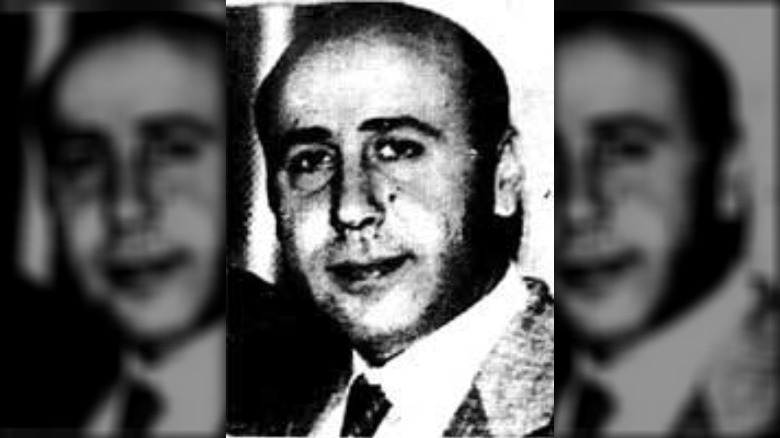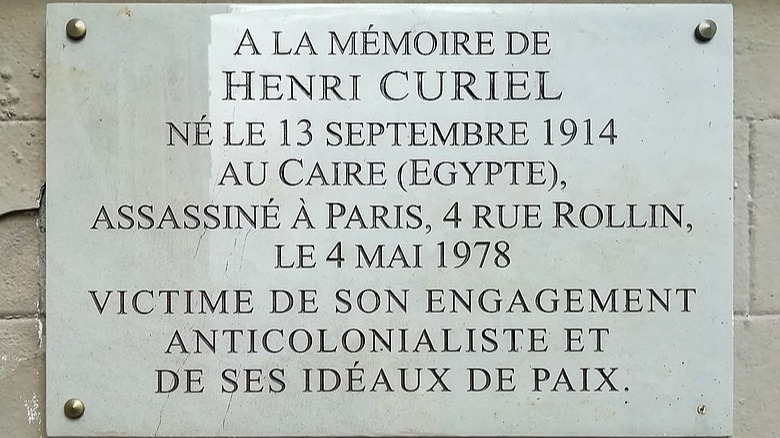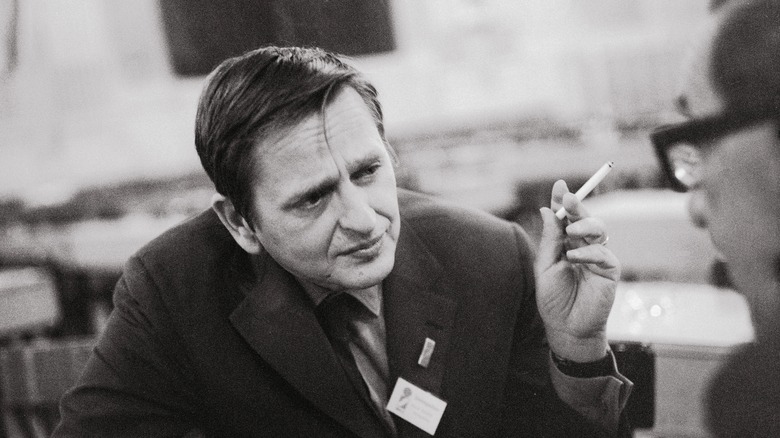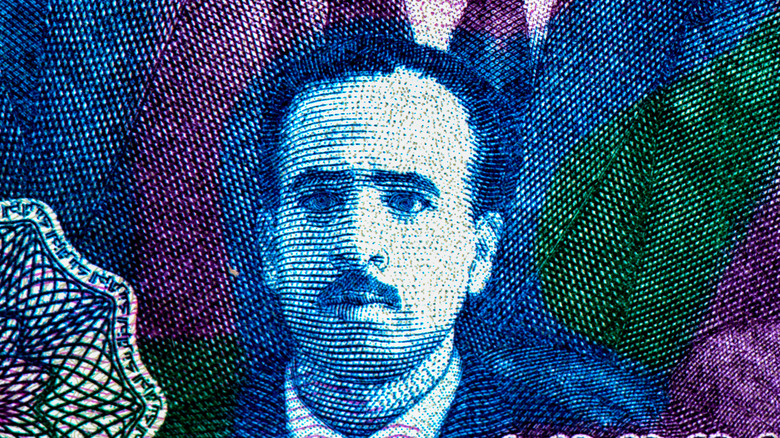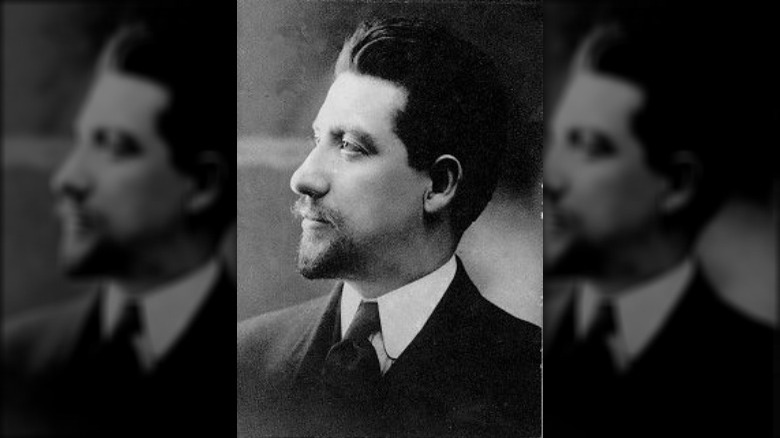Political Assassinations That Were Never Solved
If politics is a dirty business, then there is no news story dirtier than that of a political assassination. Thankfully — in most democratic countries at least — political violence remains taboo.
However, politicians and other public figures engaged in political activism are by their nature going to make enemies, if not from among one's political opponents, then from the growing resentment of millions of people who are affected by a public figure's actions or policy choices. And that can be dangerous.
But sometimes political assassinations are also a matter of freedom of speech. The Irish playwright George Bernard Shaw once claimed in his play "The Shewing Up of Blanco Posnet," assassination is the extreme form of censorship," and it is true that many of the targets have been killed because, for their enemies, their silence was preferable to their continued noisy existence. And while history has shown that many of those who carried out the crime have been brought to justice, others still remain shadowy figures or groups who were never caught.
|Featured image by BernerAchim via Wikimedia Commons| Cropped and scaled|CC BY 4.0|
Elijah Parish Lovejoy
Elijah Parish Lovejoy (1802-1837) was a newspaper editor and school founder who, after relocating from his birth state of Maine to St. Louis, Missouri, in his mid-20s became a prominent abolitionist. Lovejoy used his skills as a newsman to craft, print, and distribute materials in support of the growing anti-slavery movement, using his newspaper the St. Louis Observer as a powerful organ against the state's ongoing exploitation of slave workers.
Lovejoy was forced to flee St. Louis after his newspaper criticized a local judge for failing to bring the murderers of a local Black man to trial, incensing anti-abolitionists. He relocated to nearby Alton, Illinois, where he continued to campaign for an end to slavery, after taking over the editorship of the local Alton Observer. But still, Lovejoy faced fierce and ultimately murderous resistance. In November 1837, a violent mob attacked a building housing Lovejoy's printing press. He was shot and killed attempting to stop rioters from scaling the building.
Though the famous "Alton Trials" went ahead with many people indicted for the violence that ended in Lovejoy losing his life, no one was ever brought to justice for his murder, nor was the person who fired the gun that killed him ever officially identified.
William Goebel
The state of Kentucky was a violent place in the years following the American Civil War, with duels, shootings, and assassinations taking lives throughout the state.
And few politicians of the period demonstrate the violence of the age quite like Kentucky Gov. William Goebel. Goebel was a successful lawyer who also served in the state Senate, where he passed laws to serve the Democratic cause at the expense of corporations. Goebel enraged his opponents with his skillful exploitation of the Kentucky constitution — which he was part of the committee to write. He was also a fighter and shot and killed John Sandford, who attacked Goebel for passing laws that dramatically reduced Sandford's profits from road tolls.
But Goebel himself was shot shortly before winning an election to become Kentucky governor. He even took his oath of office while on his deathbed and presided over office for about four days before succumbing to his wounds. While many were indicted in relation to the murder, only five men stood trial and were all either found not guilty, were later acquitted, or were later pardoned, leaving the exact identity of the assassin who killed him a matter of speculation.
Morgan Earp
The lawlessness of the American frontier in the late 18th century created some legendary characters, such as Wyatt Earp, whose biography, "Wyatt Earp: Frontier Marshal," published in 1931 two years after Wyatt's death, paints the picture of a fearless lawman with his own chequered past, who nevertheless survived countless dangers to die peacefully at the age of 80. The biography has been widely discredited as fictionalized, but among the true details is the death of Wyatt Earp's brother Morgan Earp, who wasn't quite as lucky as Wyatt to live through the Wild West and make it to old age.
Along with their other brother Virgil Earp, the Earp brothers fought local outlaws in their hometown of Tombstone, Arizona, where a bitter feud with the Ike Clanton gang led to the famous gunfight at the O.K. Corral. Though the three brothers would survive the attack, Morgan would later be ambushed in a separate incident. He was attacked by an unknown assailant during a game of pool in March 1882 and died from his injuries at the age of just 30.
The enraged Wyatt thereafter rounded up a posse and began targeting several outlaws suspected of the murder, taking the law into their own hands. Though responsibility for the killing may have been laid with Clanton and several outlaws were shot and killed by Wyatt's men, it is unknown who exactly pulled the trigger on Morgan.
Alex Odeh
Alex Odeh was a Palestinian activist who worked tirelessly as a member of the American-Arab Anti-Discrimination Committee (ADC) to campaign for better treatment for those of Middle Eastern descent in the United States. The ADC was also highly critical of U.S. support for Israel in the form of foreign aid on account of the latter's aggressive foreign policies, resulting in the ADC becoming wrapped up in a feud with the Jewish Defense League.
Having relocated to the U.S. in 1972 while in his late 20s, Odeh, who was a father of three, was a regular face at the ADC's offices in Santa Ana, California, which became the target of multiple bomb attacks. On October 11, 1985, Odeh was at the office when a bomb went off, fatally wounding him.
Though there were suspects related to the killing who were wanted by the FBI, no one has ever been charged over it. A poster asking the public for information about the case still exists on the FBI's website.
Robert and Jean-Cora Smit
After the horrific institution of apartheid in South Africa was brought to an end in the mid-1990s, the new president Nelson Mandela entrusted Archbishop Desmond Tutu to chair what became known as the Truth and Reconciliation Commission. The commission was a restorative justice forum detailing the crimes and human rights abuses of the previous decades.
Examined in the report are the tragic killings of National Party politician Robert Smit and his wife, Jean-Cora Smit, in mysterious circumstances that have yet to be solved. The couple was a victim of a shooting and knife attack in their own home, which the report describes as a "professional hit. In a strange detail, the letters "RAU TEM" were found painted in red at the site of the assassination — but to this day the meaning of the message remains unclear. Numerous suspects were considered in the brutal deaths, though the commission report concluded that it must have been the work of South African Security Forces. The report did not establish a concrete motive.
In 2012, Cape Times revealed they had spoken with a source, admitting that the killings may have been conducted by a Cuban hit squad, with a man hired to cover up Robert Smit's discovery of illegal payments from South Africa to U.S. politicians, but it remains an open case officially, with a range of theories circulating online as to who exactly was responsible.
Henri Curiel
On May 4, 1978, shots rang out on the streets of the Left Bank, a bohemian district in the heart of Paris that had long attracted left-leaning artists, intellectuals, and activists from around the world. One of these was Henri Curiel, an Egyptian-born communist who had been exiled from his home country after leading a prominent communist group.
Curiel was shot and killed in the street by what neighbors who witnessed the attack claimed were two gunmen, who quickly fled the scene leaving no clue to their identities. Curiel had continued his role as a radical and disruptive political activist in the almost three decades that he had been a Paris resident, working with left-wing groups in Sudan, South Africa, and Algeria. The list of possible political enemies that may have been responsible for his death is long, and it has also been argued that it was the French security services themselves that were responsible, or maybe even the CIA. To this day, his death remains a mystery.
[Featured image by Baleine de lyon via Wikimedia Commons | Cropped and scaled | CC BY-SA 4.0]
Ioan Petru Culianu
Ioan Petru Culianu was a Romanian historian who took a professorship at the Divinity School at the University of Chicago in 1986, where he lectured students on obscure religious sects from the distant past. He was, according to one of his former students in an article in Lingua Franca: The Review of Academic Life, a gregarious, funny, and popular tutor.
So both his students and fellow staff were deeply shocked when in 1991 the 41-year-old Culianu was assassinated with eerie precision in a campus bathroom, with a single pistol shot to the back of the head. Though his academic work was initially believed to have been linked to his murder, it later emerged that Culianu had also been a vocal and prolific critic of the regime that controlled his native Romania at the time. Though it has been widely assumed that the killing was politically motivated, no concrete evidence regarding the identity of the assassin or who sent them has come to light.
Olof Palme
Olaf Palme was one of the most successful and recognizable people in Swedish politics in the final decades of the 20th century, rising as leader of the Swedish Social Democratic Workers' Party to become the country's prime minister twice: once from 1969–1976, and again from 1982–1986, when his second term was cut ruthlessly short.
On the evening of February 28, 1986, Olaf and his wife Lisbet Palme were walking home from a Stockholm cinema when a figure came up behind them and shot each in the back. Olaf was killed, while Lisbet was hospitalized. She survived.
As of 2020, 134 different people had confessed to the murder, meaning that for many the investigation looks like a lost cause. In 2020 Sweden officially closed the case on the assassination, and though Sweden's Chief Prosecutor Krister Petersson named the long-dead suspect Stig Engström as the likely perpetrator, the passage of time has meant that no new information is expected to emerge that might confirm the circumstantial evidence placing him at the scene. There are many conspiracy theories surrounding the assassination, including those that say he was murdered by the Kurdistan Workers' Party or enemies in South Africa. One man, a convicted murderer by the name of Christer Pettersson, was found guilty of killing Palme in 1988 but was acquitted the following year.
Dele Giwa
Dele Giwa was hailed as a journalistic hero for his work in his home country of Nigeria. Having received his education in the U.S. and gained vital experience at The New York Times in the late 1970s, Giwa returned to Nigeria where he became a prominent investigative journalist, uncovering the many scandals of the country's corrupt government of the day. He went on to found and become the editor-in-chief of the hard-hitting investigative paper Newswatch.
But Giwa's stellar career was to be tragically cut short. On October 19, 1986, the journalist was killed while having breakfast with a friend, Kayode Soyinka, at the former's home in Lagos (city pictured). The murder weapon was a letter bomb brought into the room by Giwa's son, which Soyinka had also held moments before Giwa opened it and received the full blast of the incendiary device inside.
Giwa had been arrested in the years prior to his killing: Indeed, his latest brush with the Nigerian state police occurred just two days before the letter bomb — which he had assumed was material for Newswatch — killed him. To date, no one has been arrested in relation to the murder.
Atilla Altıkat
On August 27, 1982, the Turkish military attache to Canada, Col. Atilla Altıkat, was traveling in his limousine through Ottawa's embassy district when an unknown gunman opened fire on the car, killing him instantly. The 45-year-old's assassination was just the latest in a huge number of targeted attacks against Turkish people from 1973 onwards, orchestrated, it was claimed, by one of many Armenian terror groups as a result of ongoing strife between the two nations. A total of 23 people were believed to have lost their lives in such attacks, which often specifically targeted Turkish diplomats living and working abroad.
While a group calling themselves "Justice Commandos for Armenian Genocide" claimed responsibility for the attack, they later merged with other groups and dissolved, meaning that uncovering the identity of Altıkat's assassin is now nigh on impossible.
In 2012, a new memorial was unveiled at the site of Altıkat's murder, dedicated to the memory of fallen diplomats.
[Featured image by MB-One via Wikimedia Commons | Cropped and scaled | CC BY-SA 4.0]
Krim Belkacem
Krim Belkacem was an Algerian living in exile in Germany at the time of his horrific murder, which took place in a Frankfurt hotel room on October 20, 1970. He was found strangled. Formerly the leader of the National Liberation Front — a revolutionary group in Algeria fighting French occupation — he had helped to fight the revolt as a military leader. However, the capture of his allies, the formation of a rival government, and his eventual sentencing to death for treason forced him to flee the country he had helped to shape.
Their report of the murder contains details of a group of Moroccan men who had checked into the hotel and left without paying — it was also in one of these rooms that Belkacem's body was discovered. In "Algeria: Anger of the Dispossessed," the historian Martin Evans argues that everyone connected to the National Liberation Front put the blame for the killing at the feet of the new Algerian government; however, more recently it has been argued that his death may have been orchestrated by external forces to stoke tension in Algeria.
Carlo Tresca
Carlo Tresca was an anarchist newspaper owner and political activist who on the night of January 11, 1943, was shot dead on the streets of New York. He had been a radical figure: Born in Italy, Tresca had come to America where he established himself as an outspoken critic of fascists and exploitative capitalists, and won many friends with his charisma. "He was the last of the great revolutionists who fought implacably with love instead of hate in their hearts," his friend Max Eastman told author Dorothy Gallagher for her book, "All the Right Enemies: The Life and Murder of Carlo Tresca."
Some of his final work had been on highlighting the hypocrisy of former-fascist Italians attempting to carve up political power in the wake of Benito Mussolini, which had also made enemies of movements across the political spectrum, including communist groups. Through his quarrels, Tresca also managed to incur the attention of the mafia, some of whom were believed to have ties to Tresca's enemies in Italy.
As such, it has never been fully ascertained who pulled the trigger on Tresca, with journalists investigating the case offering a wide range of possible motives from numerous groups that crossed Tresca's path. And while many fingers pointed at mob hoodlum Carmine Gallante, he was never arrested.
